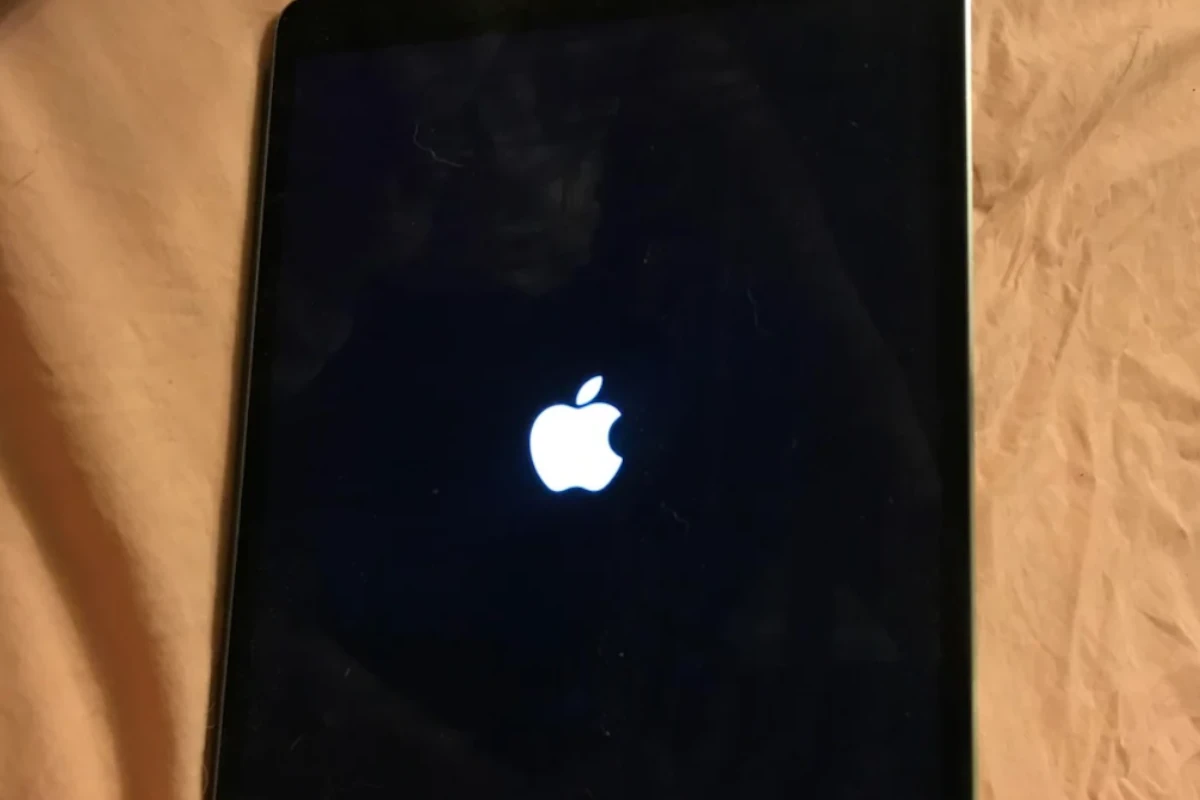Is your iPad stuck showing that update message that never seems to finish? Many iPad users face this issue when trying to update their device. You can fix most iPad update problems by checking your Wi-Fi connection, freeing up storage space, restarting your device, or using iTunes as an alternative update method.
Update failures on iPads are common but usually easy to solve. Sometimes the problem is as simple as a poor internet connection or not having enough battery power. Other times, your iPad might need more storage space to download and install the update files.
If basic solutions don’t work, you might need to try updating through iTunes on a computer or performing a forced restart. For older iPads, some new updates may not be compatible with your device model.
How To Fix an iPad That Won’t Update
If your iPad won’t update to the latest version of iPadOS, it could be due to storage issues, network problems, software bugs, or compatibility limitations. Here’s a full guide to troubleshoot and get your iPad updating again.
Step 1: Check iPad Compatibility
Make sure your iPad supports the update you’re trying to install. Older models may not support newer versions of iPadOS.
How to check:
- Go to Settings > General > About.
- Find your Model Name and Model Number.
- Search online to confirm your iPad supports the latest iPadOS version.
Step 2: Make Sure You’re Connected to Wi-Fi
- Updates won’t install over cellular data.
- Connect to a stable Wi-Fi network.
- Try toggling Wi-Fi Off and On, or forget and reconnect to the network.
Step 3: Ensure You Have Enough Storage Space
- Go to Settings > General > iPad Storage.
- Check available space. Most updates require at least 6–7 GB free.
- If needed, delete unused apps, offload media, or use iCloud to clear space.
Step 4: Plug in and Charge
iPadOS updates require the device to be charged or connected to power. Make sure your battery is at least 50%, or keep the iPad plugged in during the update.
Step 5: Restart the iPad
A simple reboot can fix temporary glitches:
- Press and hold the Top button and either Volume button until the power slider appears.
- Drag the slider to turn it off.
- After it shuts down, press and hold the Top button again to turn it back on.
Step 6: Update Using iTunes or Finder (Computer Method)
If the over-the-air update won’t work:
- Connect your iPad to a Mac or Windows PC.
- On macOS Catalina or later, open Finder. On Windows or older macOS, open iTunes.
- Select your iPad when it appears.
- Click Check for Update.
- If available, click Download and Update.
Step 7: Reset Network Settings (If Update Won’t Start)
- Go to Settings > General > Transfer or Reset iPad.
- Tap Reset, then choose Reset Network Settings.
- Reconnect to Wi-Fi and try the update again.
Step 8: Delete and Re-download the Update File
If the update is stuck or fails to install:
- Go to Settings > General > iPad Storage.
- Find and tap the iPadOS update file (it may say “iOS” or “Software Update”).
- Tap Delete Update.
- Restart your iPad and try downloading the update again from Settings > General > Software Update.
Step 9: Check Apple’s System Status
If nothing works, the problem might be on Apple’s end. Temporary outages can affect update servers. Try again later if everything else fails.
If your iPad still won’t update after trying all of the above, it may need a full restore or inspection by Apple Support.
Key Takeaways
- Check your Wi-Fi connection and make sure your iPad has enough storage space and battery power before attempting updates.
- Restart your iPad or try a forced restart if the update continues to fail or gets stuck.
- Use iTunes on a computer as an alternative method to update your iPad when normal update methods don’t work.
Understanding iPad Update Requirements
Before updating your iPad, it’s important to know if your device meets Apple’s requirements. You’ll need a compatible iPad model, enough storage space, and a good internet connection to successfully install updates.
Supported iPad Models and iOS Compatibility
Not all iPad models can run the latest iOS versions. Apple typically supports iPads for 5-7 years after release. For example, iOS 17 works with iPad Pro (all models), iPad Air (3rd generation and later), iPad (6th generation and later), and iPad mini (5th generation and later).
Older iPads have limitations with newer updates. If your iPad is more than 7 years old, it might not support the current iOS. You can check if your device is eligible for an update on Apple’s website.
- Go to Settings > General > About
- Look for “Model Name” and “Model Number”
Checking for Latest iOS Version
You should regularly check if your iPad has the most recent iOS version. Apple releases updates with new features and security fixes throughout the year.
To check for updates:
- Connect to Wi-Fi
- Go to Settings > General
- Tap Software Update
Your iPad will show if an update is available. The screen will display the current version and if a newer one exists. You can see update options and choose which one to install if multiple are available.
If no update appears but you think one should be available, try restarting your iPad or checking Apple’s system status page to make sure their servers are working properly.
Pre-Update Checklist for iPads
Before updating your iPad, you need to prepare it properly to avoid common update issues. Taking a few minutes to check these key areas can save hours of troubleshooting later.
Ensuring Ample Storage Space
Your iPad needs enough free space to download and install updates. iOS updates typically require 2-4GB of available storage, depending on the version.
To check your storage:
- Go to Settings > General > iPad Storage
- Review the colored bar at the top showing used and available space
- Delete unused apps, photos, or videos if needed
Many update failures happen due to insufficient storage space. Photos and videos often take up the most space. Consider moving these to iCloud or your computer temporarily.
You can also offload unused apps by going to the iPad Storage menu and tapping specific apps. This removes the app but keeps its data for later.
Connecting to a Reliable Wi-Fi Network
iPad updates require a strong, stable internet connection. Weak Wi-Fi is a common reason updates fail or get stuck.
Tips for optimal Wi-Fi connection:
- Position your iPad closer to your router
- Restart your router by unplugging it for 30 seconds
- Disconnect other devices from your network during the update
- Avoid public Wi-Fi networks for system updates
If your Wi-Fi seems unstable, you can pause and resume the update in Settings. Or try a different network altogether.
For persistent connection issues, you might need to reset your network settings by going to Settings > General > Reset > Reset Network Settings.
Creating a Backup of iPad Data
Always back up your iPad before updating. This protects your data if something goes wrong during the update process.
You have two backup options:
- Connect to Wi-Fi
- Go to Settings > [your name] > iCloud > iCloud Backup
- Turn on iCloud Backup and tap “Back Up Now”
Computer Backup:
- Connect your iPad to your computer
- Open Finder (Mac with macOS Catalina or later) or iTunes (Windows or older Mac)
- Select your iPad when it appears
- Click “Back Up Now”
Backups save your settings, app data, messages, and photos. A full backup might take 15-30 minutes depending on your iPad’s content.
Troubleshooting Common iPad Update Issues
When your iPad refuses to update, several common issues might be causing the problem. Most update problems stem from storage limitations, software glitches, or connection issues that can be fixed with the right approach.
Resolving Insufficient Storage Space Problems
One of the most common reasons an iPad won’t update is insufficient storage space. iOS updates require significant free space to download and install properly.
To check your available storage:
- Go to Settings > General > iPad Storage
- Look at the colored bar at the top showing used and available space
If space is limited, try these quick fixes:
- Delete unused apps by long-pressing their icons and selecting “Remove App”
- Remove large videos or photos after backing them up to iCloud
- Clear Safari cache through Settings > Safari > Clear History and Website Data
You can also offload apps instead of deleting them completely. This removes the app but keeps its data. Go to Settings > General > iPad Storage, select an app, and tap “Offload App.”
Fixing Software Download and Installation Errors
Software bugs often prevent updates from completing properly. If your iPad starts downloading an update but gets stuck, try these solutions:
First, check if Apple’s servers are working by visiting Apple’s System Status page. Server issues can temporarily prevent updates.
If servers are fine, restart your iPad by:
- Pressing and holding the top button and either volume button
- Sliding to power off
- Waiting 30 seconds before turning it back on
Connection problems also cause update failures. Switch between Wi-Fi networks or reset your network settings through Settings > General > Reset > Reset Network Settings.
For stubborn issues, try updating through a computer:
- Connect your iPad to a PC or Mac
- Open iTunes (Windows) or Finder (Mac)
- Select your iPad and click “Check for Update”
Dealing with iPad Stuck on Apple Logo
When your iPad gets stuck on the Apple logo during an update, it’s usually experiencing a software crash. This frustrating problem can often be fixed without losing data.
Try a forced restart first:
- For iPads with Home button: Press and hold Home and Top buttons until the Apple logo appears
- For iPads without Home button: Press Volume Up, Volume Down, then hold the Top button
If a forced restart doesn’t work, try recovery mode:
- Connect your iPad to a computer
- Force restart your iPad while connected
- When the recovery mode screen appears, choose “Update” (not “Restore”)
This method tries to reinstall iOS without erasing your data. The process takes about 15 minutes. If it takes longer, your iPad might exit recovery mode, requiring you to start over.
Addressing iPad Stuck in Recovery Mode
When your iPad gets trapped in recovery mode during an update, it shows a “Connect to iTunes” or computer icon. This issue needs special attention to resolve.
First, try exiting recovery mode normally:
- Disconnect your iPad from the computer
- Hold the Top button until the iPad turns off
- Turn it back on normally
If normal exit fails, use force exit techniques:
- For models with Home button: Hold Home + Power buttons for 10 seconds
- For models without Home button: Press Volume Up, Volume Down, then hold Top button
When these methods don’t work, you might need DFU (Device Firmware Update) mode. This is deeper than recovery mode and can fix serious software issues:
- Connect iPad to computer
- Hold Power button for 3 seconds
- Keep holding Power while pressing Volume Down for 10 seconds
- Release Power but keep holding Volume Down for 5 more seconds
DFU mode shows a black screen. From here, iTunes/Finder will detect your device and offer restoration options. This method erases all data, so only use it as a last resort.
Advanced Solutions for iPad Update Failures
When standard troubleshooting doesn’t fix your iPad update problems, you might need more powerful solutions. These advanced methods can help resolve stubborn update issues that resist basic fixes.
Using Recovery Mode for iOS Update
Recovery Mode is a powerful tool when your iPad completely refuses to update normally. To enter Recovery Mode on newer iPad models without a home button, press and quickly release the Volume Up button, then Volume Down button, and finally hold the Top button until you see the recovery mode screen.
For older iPads with a home button, press and hold both the Home and Top buttons at the same time until the recovery screen appears. Once in Recovery Mode, connect your iPad to a computer with iTunes or Finder (for macOS Catalina and later).
Your computer will detect an iPad in Recovery Mode and prompt you to restore or update your device. Choose “Update” to reinstall iOS without erasing your data. This method often works when regular updates fail repeatedly.
Performing an iPad Force Restart
A force restart can fix many update problems by clearing temporary glitches in your iPad’s memory. This doesn’t erase your data but forces your device to do a complete restart.
For iPads with Face ID: Quickly press the Volume Up button, then Volume Down button, and hold the Top button until the Apple logo appears.
For iPads with a Home button: Hold the Home and Top (or Side) buttons at the same time until you see the Apple logo.
After the force restart, try updating your iPad again. This simple but effective method resolves many update failures caused by temporary system freezes. Sometimes your iPad needs multiple restarts before an update will work properly.
Utilizing Third-party Software for System Repair
When Apple’s built-in solutions fail, third-party repair tools can often fix stubborn update problems. Software like ReiBoot, Dr.Fone, and iMyFone Fixppo specialize in iOS system recovery.
These tools offer “no data loss” repair options specifically designed for update failures. They work by reinstalling the iOS system files without touching your personal data. Most have simple interfaces with one-click repair options.
To use these tools:
- Download and install the software on your computer
- Connect your iPad with a USB cable
- Select the “System Repair” or “Fix iOS” option
- Follow the on-screen instructions
The software will download the correct firmware and fix your iPad’s update problem. While some basic features are free, full repair capabilities usually require purchasing a license.
Restoring or Downgrading iPad’s iOS
Sometimes your iPad needs a fresh start or you may want to return to an earlier iOS version. These processes can fix update problems and restore normal function to your device.
How to Restore iPad to Factory Settings
Restoring your iPad can fix many update issues. This process erases all content and returns your device to its original state.
To restore your iPad using a computer:
- Connect your iPad to a computer with a cable
- Open iTunes (on Windows or older Macs) or Finder (on newer Macs)
- Select your iPad when it appears
- Click “Restore iPad” option
- Confirm your choice when prompted
- Wait for the process to complete
If your iPad won’t update normally, you might need recovery mode. Press and hold the Top and Volume buttons until you see the recovery screen. Then follow the restore steps above.
For stubborn issues, DFU (Device Firmware Update) mode offers a deeper restore. This completely rebuilds your iPad’s software and can fix more serious problems.
Steps to Downgrade to a Previous iOS Version
Downgrading from a newer iOS version (like iOS 18 beta) to an older version (like iOS 17) requires specific steps.
First, you can only downgrade to versions Apple still signs (authorizes). Apple typically stops signing older versions shortly after releasing new ones.
To downgrade your iPad:
- Download the IPSW file for the iOS version you want
- Put your iPad in DFU mode
- Connect to a computer with iTunes or Finder open
- Hold Shift (Windows) or Option (Mac) while clicking “Restore iPad”
- Select the downloaded IPSW file
- Wait for the downgrade to complete
Tools like Dr.Fone can sometimes help with the downgrade process, especially for less technical users. Remember that downgrading will erase all data on your iPad, so backing up beforehand is essential.
Understanding iPadOS and iOS Upgrade Benefits
Keeping your iPad updated ensures you have access to the latest features and security improvements. Regular updates also help maintain your device’s performance and compatibility with new apps.
Exploring Key Features of the Latest iOS
Recent iOS updates include several helpful improvements. The latest version offers better battery management, which helps your iPad last longer between charges. You’ll also find improved privacy controls that give you more say over how apps use your data.
Many updates add new functionality to built-in apps. For example, Notes now supports better organization with tags and smart folders. FaceTime has gained new viewing options and the ability to schedule calls.
Accessibility features continue to expand with each update. Voice Control has become more accurate, and there are new options for text size and display settings.
Security patches in updates protect your iPad from newly discovered threats. These fixes are often the most important reason to update quickly.
Determining the Need to Upgrade
Not every update is essential for all users. Check what’s included in an update before installing it. Minor updates (like 15.4 to 15.4.1) usually fix bugs and security issues without adding major features.
Your iPad’s age affects update compatibility. Older models may not support the newest iOS versions. You can check compatibility in Settings under General > Software Update.
Consider your storage space before updating. iOS updates require free space to download and install. If your iPad is nearly full, you might need to remove some apps or files first.
Some users prefer to wait a few days after a major update release. This gives time for any serious bugs to be discovered and fixed in follow-up updates.
If certain apps are crucial for your work, check if they’re compatible with the new iOS before updating.
Seeking Help from Apple Support
When your iPad update problems persist after trying basic fixes, Apple’s support services can provide expert help. Their team can guide you through advanced troubleshooting or repair options.
When to Contact Apple Support
If your iPad shows an error message during updates or gets stuck on the Apple logo, it’s time to call the experts. Before reaching out, try these steps:
- Restart your iPad
- Check your internet connection
- Free up storage space
- Try updating through iTunes/Finder
Contact Apple Support when:
- Your iPad shows a black screen and won’t respond
- Update errors continue after multiple attempts
- Recovery mode doesn’t solve the problem
Apple offers several ways to get help. You can chat online, schedule a phone call, or use the Apple Support app. The app lets you explain your problem and connect with a specialist quickly.
Warranty and Support Options for iPad
Your iPad’s warranty status affects your support options. Most iPads include a one-year limited warranty covering hardware failures but not accidental damage.
AppleCare+ extends this coverage and adds:
- Two incidents of accidental damage every 12 months
- Priority access to Apple experts
- Battery service when capacity drops below 80%
Even without a warranty, Apple can still help with software updates. Their support team may offer free solutions for common iOS issues. For hardware problems outside warranty, Apple provides repair services at their standard fees.
You can check your warranty status by entering your iPad’s serial number on Apple’s website. This helps you understand available options before contacting them about update problems.
Updating an Older iPad Model
Older iPads face unique update challenges due to hardware limitations and iOS compatibility issues. With the right approach, many users can still update their devices or find workarounds for obsolete models.
Challenges with Updating Older Devices
Some iPad models simply can’t run newer iOS versions. Apple stops supporting older devices after several years. For example, first-generation iPads can’t go beyond iOS 5, while the iPad 2, 3, and first iPad Mini are stuck at iOS 9.3.5.
When you see “Unable to Update” messages, it often means your iPad is too old for the latest update. Storage space can also block updates. Your iPad needs enough free space to download and install new software.
Connection problems might prevent updates too. Weak Wi-Fi signals or network restrictions can interrupt the download process. Some users find their iPad Air won’t download updates even when theoretically compatible.
Battery issues can also interfere. Apple requires at least 50% battery or a power connection before allowing updates.
Solutions for Updating Obsolete iPad Models
For iPads that can’t receive current updates, you still have options. You can update wirelessly or through a computer to get the latest supported version. Connect to strong Wi-Fi and plug in your charger before trying.
Free up storage by removing unused apps, photos, and videos. This often solves update failures on older models like iPad Air 2. Check your available space in Settings > General > iPad Storage.
Try putting your device in recovery mode if normal updates fail. This more aggressive approach can fix stubborn update problems by essentially resetting the update system.
For truly obsolete devices, focus on compatible apps rather than iOS updates. Many developers offer legacy versions that work on older iOS versions. You can also use these older iPads for specific tasks like e-readers or music players.
Effective Use of iPad Update Tools
When your iPad won’t update, having the right tools can make fixing the problem much simpler. Apple provides built-in options while third-party solutions offer alternatives when standard methods fail.
iTunes for Managing iPad Updates
iTunes offers a reliable way to update your iPad when the normal update process isn’t working. To update through iTunes, connect your iPad to a computer with a USB cable. Open iTunes (on Windows) or Finder (on newer Macs) and select your device when it appears.
Look for the “Check for Update” button on the device summary screen. This method is especially helpful when your iPad shows update errors or gets stuck downloading.
iTunes provides these key advantages:
- Bypasses storage limitations on your iPad
- Works even when Wi-Fi is unreliable
- Creates a backup automatically before updating
- Often resolves stubborn update issues
Many users find success with iTunes when the normal update methods fail. It downloads the complete software update package instead of just the changes.
Third-party Tools like Tenorshare ReiBoot
When both standard updates and iTunes fail, third-party tools like Tenorshare ReiBoot can help. These specialized programs are designed to fix iOS system issues that prevent updates.
ReiBoot works by putting your iPad in recovery mode and repairing the system. You install the software on your computer, connect your iPad, and follow the guided process. The tool offers both free and paid features.
ReiBoot can fix problems like:
- Update errors and frozen progress bars
- System crashes during updates
- Recovery mode loops
- Software conflicts preventing updates
The standard repair option preserves your data while fixing system issues. For more serious problems, a deep repair might be needed. These tools work well when other options have failed and can save you from needing to reset all settings or visit a repair shop.
Frequently Asked Questions
iPad updates can run into several common problems. Here are solutions to the most frequent issues users face when trying to update their devices.
What steps can be taken when an iPad is unable to update to iOS 17?
If your iPad won’t update to iOS 17, first check your internet connection. A stable Wi-Fi network is essential for downloading updates.
Try resetting your network settings by going to Settings > General > Reset > Network Settings. You’ll need to rejoin your Wi-Fi network afterward.
Restart your iPad before trying again. Press and hold the power button until “slide to power off” appears, then slide to shut down. After a minute, turn it back on.
Make sure you have enough storage space. Go to Settings > General > iPad Storage to check and delete unneeded apps or files.
How can one resolve an issue where an iPad won’t update using iTunes?
When your iPad won’t update through settings, try using iTunes on a computer as an alternative method. This often works when the normal update process fails.
First, connect your iPad to your computer using the original USB cable. Open iTunes (on Windows) or Finder (on Mac) and select your device when it appears.
Click on “Check for Update” rather than “Restore.” This preserves your data while installing the new iOS version.
If iTunes doesn’t recognize your device, try a different USB port or cable. Sometimes the connection is the problem.
What solutions are available for a new iPad that is stuck on a software update?
For a new iPad stuck during an update, try a forced restart. For models with a Home button, press and hold both the Home and Power buttons until you see the Apple logo.
For iPads without a Home button, press and quickly release the Volume Up button, then Volume Down, then press and hold the Power button until the Apple logo appears.
Check if Apple’s servers are experiencing issues by visiting Apple’s System Status page. Sometimes updates fail because of server problems, not your device.
If these steps don’t work, try putting your iPad in recovery mode and updating through your computer.
How can one troubleshoot an iPad that has sufficient storage but fails to update to iOS 17?
Even with enough storage, updates can fail. Try deleting the downloaded update file and starting fresh. Go to Settings > General > iPad Storage, find the iOS update file, and delete it.
Turn off and restart your iPad. Then go to Settings > General > Software Update to download the update again.
If your iPad still won’t update, try updating through a computer. Connect your iPad to a Mac or PC and use iTunes or Finder to install the update.
Consider backing up your data and trying a factory reset if all else fails.
What is the procedure to update an older iPad to the latest iOS version it supports?
Older iPads can’t run iOS 17, but they can update to their maximum supported version. Go to Settings > General > Software Update to see what’s available.
If no update appears but you know one exists, connect to a computer with iTunes or Finder. This may offer an update not shown on the device itself.
For very old models, you might need to use an older version of iTunes that’s compatible with your iPad’s generation.
Always back up your iPad before updating older devices, as they may become slower after updates.
What options exist for iPads that no longer receive software updates?
iPads that no longer get updates can still be useful. Focus on apps that continue to support older iOS versions or use web-based alternatives when possible.
Keep your apps updated even if iOS can’t update. Developers sometimes provide security fixes for apps on older systems.
Consider your iPad for specific tasks like reading, music, or as a dedicated device for kids. It can serve well in a limited role.
For security, avoid using outdated iPads for banking or sensitive personal information. The lack of security updates makes them vulnerable over time.







